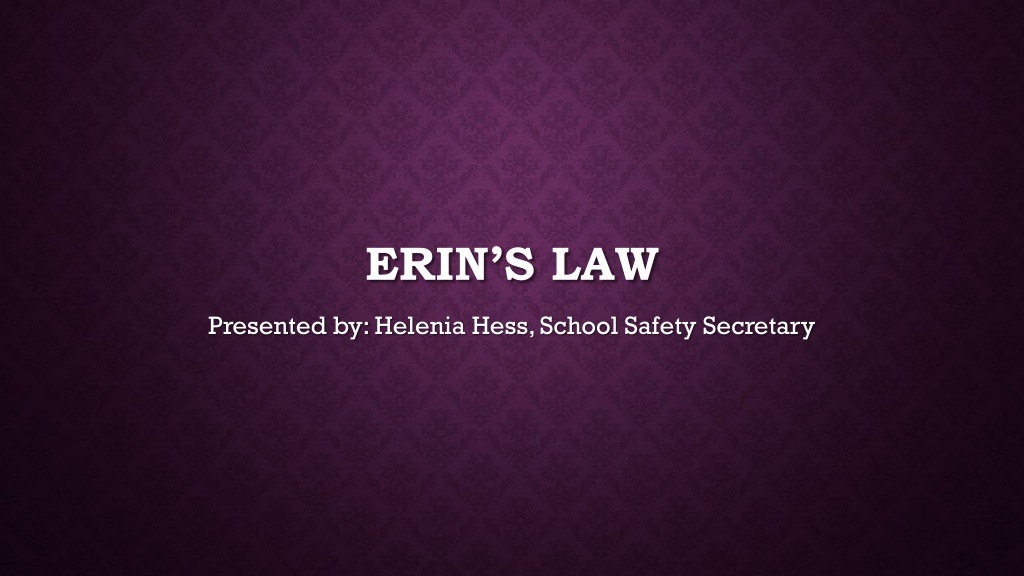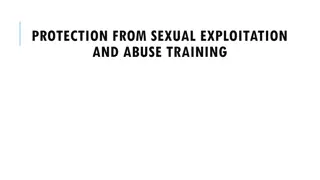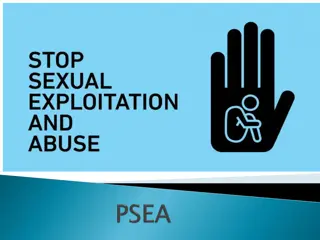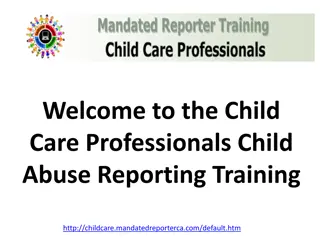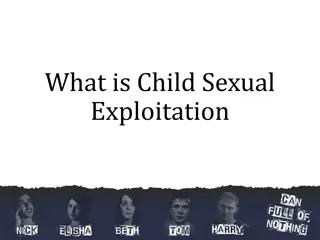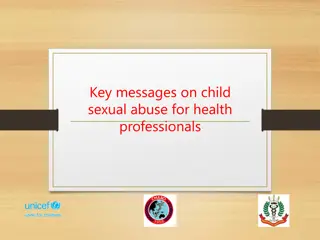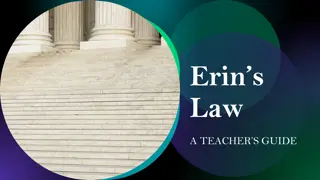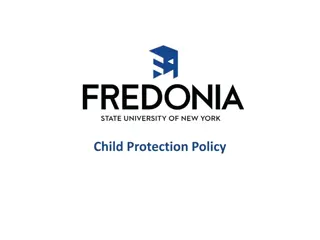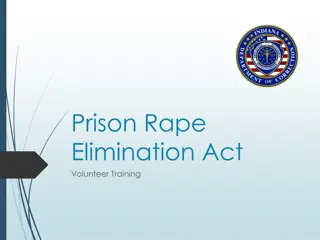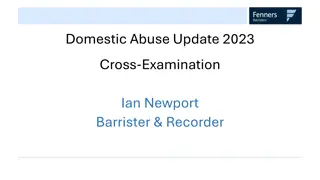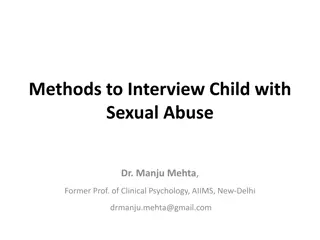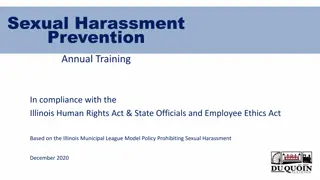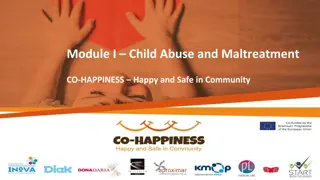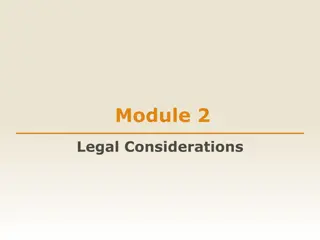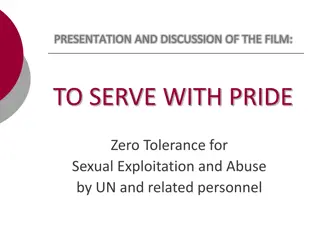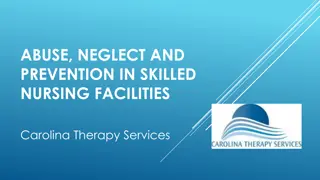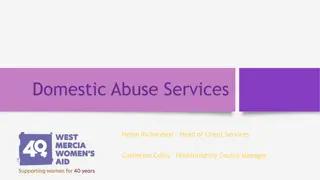Understanding Erin's Law and Child Sexual Abuse Prevention
Erin's Law, named after Erin Merryn, a childhood sexual assault survivor, aims to prevent child sexual abuse by educating students, school personnel, and parents about recognizing and reporting abuse. The law mandates schools to implement prevention programs and teach age-appropriate techniques. Recognizing warning signs of abuse, handling disclosures sensitively, and refraining from contacting parents when abuse is disclosed are key aspects emphasized. Understanding the law's requirements and how to support abused children is crucial in creating a safe environment in schools.
Download Presentation

Please find below an Image/Link to download the presentation.
The content on the website is provided AS IS for your information and personal use only. It may not be sold, licensed, or shared on other websites without obtaining consent from the author. Download presentation by click this link. If you encounter any issues during the download, it is possible that the publisher has removed the file from their server.
E N D
Presentation Transcript
ERINS LAW Presented by: Helenia Hess, School Safety Secretary
WHAT IS ERINS LAW? Erin s Law is named after childhood sexual assault survivor, author, speaker and activist Erin Merryn, who is the founder and President of Erin s Law, which is registered with the State of Illinois and the IRS as a 501 (c)(4) non-profit social welfare organization. Erin s Law requires that all public schools in each state implement a prevention- oriented child sexual abuse program which teaches: 1 Students in grades preK 12th grade, age-appropriate techniques to recognize child sexual abuse and tell a trusted adult 2 School personnel all about child sexual abuse 3 Parents & guardians the warning signs of child sexual abuse, plus needed assistance, referral or resource information to support sexually abused children and their families
DID YOU KNOW? 1 in 4 girls and 1 in 6 boys are sexually abused by the age of 18. If you don t think you know a student that this has happened to think again. These children are sitting in our classrooms. Talk to students about safe and unsafe touches, safe and unsafe secrets. Giving them examples. Make students aware of safe adults they can go to if they are being abused. Give examples (teacher, principal, school counselor, parent, or other non-offending relative)
WARNING SIGNS OF AN ABUSED CHILD: Sexual and Physical Abuse Defiant Bruises Acting out or disruptive behavior Change in appetite Coming to school too early or not wanting to go home. Inappropriate clothing such as long sleeve shirts in warm weather. Changes in grades Aggressive towards other students Cheating and lying
WHEN A CHILD DISCLOSES WHAT SHOULD YOU DO? Do not act shocked Praise the child by telling them they did the right thing by telling Do not pry the child for information. Do not ask leading questions. Let child know they are safe now Make the child as comfortable as possible Reassure child this is not their fault Explain that the school has to notify the police
TALKING TO PARENTS Do NOT contact the parents if a child discloses abuse A parent may try and have their child recant the abuse they reported. Parent may take off with child and go into hiding Parent may confront abuser if known before police are involved
MANDATE REPORTER The Keeping Children and Families Safe Act of 2003 (P.L. 108-36) included the reauthorization of the Child Abuse Prevention and Treatment Act (CAPTA) in its Title I, Sec. 111. CAPTA provides minimum standards for defining child physical abuse and neglect and sexual abuse that States must incorporate into their statutory definitions in order to receive Federal funds. Under this Act, child maltreatment is defined as: * Continued on next slide* As a mandated reporter if you suspect a child is being abused you MUST contact child protective services IMMEDIATELY and the police.
IF YOU SUSPECT A CHILD IS BEING SEXUALLY ABUSED, GETTING THE PROPER HELP AND SUPPORT IS VITAL. TYPICALLY, THE SITUATIONS THAT REQUIRE REPORTING ARE: A child is showing warning signs of being abused A child has stated that he or she is being abused. A child has stated that another child has been abusing them. An adult discloses he or she has abused a child An child has become aware of child pornography online An adult is aware of another adult or child who is viewing child pornography A child states that their friend or family member is being abused
